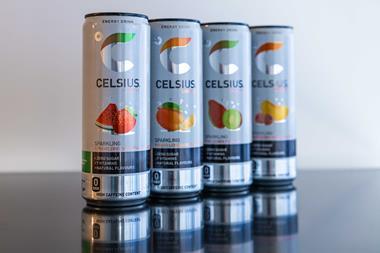New research quantifying the impact of onshelf availability on spending reveals retailers begin to lose sales when stocks start dropping below 75%.
When they fall below 50%, and what's left on the shelf is less visible, the lost sale rates start to rocket, claim researchers TNS Radar and ID Magasin.
By altering stock levels in a category over a seven-week period and monitoring the impact on EPoS data, the companies have quantified the impact of empty, half-full and full shelves on shopping behaviour and translated it into lost sales.
Data has been collected over an 18-month period from all the leading supermarkets across every product category. Customers shopping the fixture have also been filmed.
ID Magasin MD Siemon Scamell-Katz said impulse categories had the most to gain from ensuring shelves were replenished more frequently. "Visibility in categories like health and beauty is critical. "If you have 50% availability in these categories, and all the stock is at the bottom or back of the shelf, that product is effectively out of stock to the consumer who hasn't gone in with the intention of buying it."
In categories like lemonade, where the brand may not be as important, shoppers will switch if their regular brand is not available, said Scamell-Katz. In the beer or lager category, low or empty shelves of a preferred brand will most likely lead to a lost sale.
At its most basic level, the research shows that replenishing shelves when stocks are only partially depleted rather than virtually empty, will make a huge difference to sales, said Scamell-Katz. What it also highlights is the huge variation in shopper reaction to stock levels across different categories, that should help staff prioritise shelf stacking duties.
"This will help solve a problem that has bedevilled traders since retailing began."
{{NEWS }}
When they fall below 50%, and what's left on the shelf is less visible, the lost sale rates start to rocket, claim researchers TNS Radar and ID Magasin.
By altering stock levels in a category over a seven-week period and monitoring the impact on EPoS data, the companies have quantified the impact of empty, half-full and full shelves on shopping behaviour and translated it into lost sales.
Data has been collected over an 18-month period from all the leading supermarkets across every product category. Customers shopping the fixture have also been filmed.
ID Magasin MD Siemon Scamell-Katz said impulse categories had the most to gain from ensuring shelves were replenished more frequently. "Visibility in categories like health and beauty is critical. "If you have 50% availability in these categories, and all the stock is at the bottom or back of the shelf, that product is effectively out of stock to the consumer who hasn't gone in with the intention of buying it."
In categories like lemonade, where the brand may not be as important, shoppers will switch if their regular brand is not available, said Scamell-Katz. In the beer or lager category, low or empty shelves of a preferred brand will most likely lead to a lost sale.
At its most basic level, the research shows that replenishing shelves when stocks are only partially depleted rather than virtually empty, will make a huge difference to sales, said Scamell-Katz. What it also highlights is the huge variation in shopper reaction to stock levels across different categories, that should help staff prioritise shelf stacking duties.
"This will help solve a problem that has bedevilled traders since retailing began."
{{NEWS }}













No comments yet